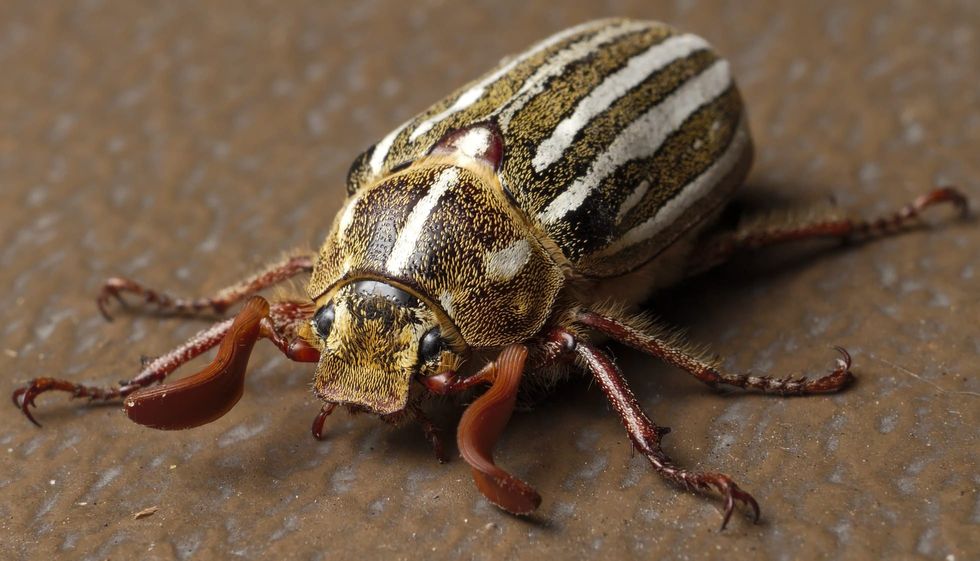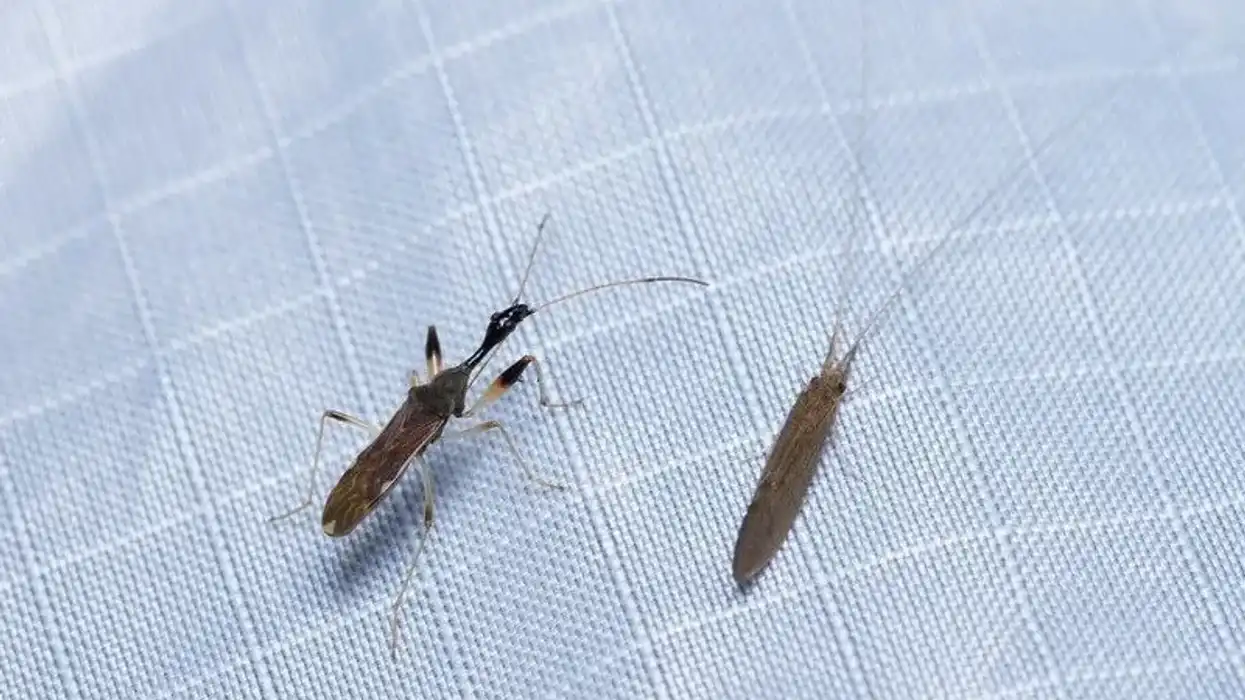Ten-lined June beetles belong to the Scarabaeidae family of the Insecta class. They are known worldwide for the unique linear patterns on their wings.
These bugs have poor eyesight, however, adult watermelon beetles are very much attracted to lights. Their habit of getting attracted to lights makes it easier to catch them using tools like a backlight cage and more. They are native to the Northern hemisphere, and widely found in Canada, and the northern and western parts of the United States.
These beetles feed on the leaves and roots of trees. They very much like to drink juices from raspberries and grapefruits. They are considered enemies of trees, as they can decay trees they feed on. They can remain in their larvae state for four years. On the other hand, adults live less than a year.
To learn more, we have collected a set of interesting facts about ten-lined June beetles for you to read. You can also learn more about fascinating wild animals and insects by reading up more articles on the longhorn beetle and the soldier beetle.
Ten-Lined June Beetle Interesting Facts
What type of animal is a ten-lined June beetle?
A ten-lined June beetle (Polyphylla decemlineata) is a scarab beetle, from the Polyphylla genus of the Scarabaeidae family. They are popularly known as the watermelon beetle and the June bug.
What class of animal does a ten-lined June beetle belong to?
The ten-lined June beetle belongs to the Insecta class of the Animalia kingdom.
How many ten-lined June beetle are there in the world?
As they are very small insects, with a vast range. Hence, it is extremely difficult to have an exact estimate of their population.
Where does a ten-lined June beetle live?
They are found throughout the northern and western United States, and Canada as well. They are spotted in the states of Kansas, Arizona, California, Nebraska, and Nevada. They are largely available, especially in the state of Colorado.
What is a ten-lined June beetle's habitat?
These beetles live on farmlands, shrublands, and forests. They are known as agricultural pests. larvae live in the soil and feed on plant roots.
Who do ten-lined June beetle live with?
They are solitary insects. However, they form a breeding pair right before the mating season.
How long does a ten-lined June beetle live?
They can remain in their larvae state for three or four years. After emerging out from the soil as an adult, they live for less than a year.
How do they reproduce?
They are named 'June Beetles' as the adults emerge from the soil in the month of June. When female June beetles emerge from the soil, they eject pheromones to attract male June beetles.
After mating, the female June beetle hides in the soil. They lay their eggs around 5-14 in (12.7-35.6 cm) deep in the soil. They lay about 60-70 eggs. The grubs hatch out of their eggs after two and half weeks. The grubs then take shelter underground for about the next two years.
What is their conservation status?
The ten-lined June beetle species is not listed in the International Union For Conservation of Nature (IUCN) Red List.
Ten-Lined June Beetle Fun Facts
What do ten-lined June beetle look like?

This species of beetle are easily identified by four white lines on their elytra. They possess antennas with lamellate plates. In appearance, they are typically blackish and reddish-brown.
How cute are they?
This species of beetle appear stunning and cute due to the special linear patterns on its wings.
How do they communicate?
Researchers have found that most of these beetles have poor eyesight. Along with sound and vibration, they use pheromones as a medium to communicate, especially while forming a pair.
How big is a ten-lined June beetle?
These bugs are typically 0.9-1.2 in (22-30 mm) in length. With proper nutrition, the grubs can grow up to 2 in (5 cm). They are nearly half the size of Hercules beetles.
How fast can ten-lined June beetle move?
Similar to other beetles, the ten-lined June beetle can move and fly with great speed. However, the exact speed at which they move is not yet known.
How much does a ten-lined June beetle weigh?
Being such tiny creatures, the exact body weight of their species is unknown.
What are their male and female names of the species?
There are no particular names given to male and female beetles.
What would you call a baby ten-lined June beetle?
Baby June beetles are simply called 'larvae'. They can grow up to 2 in (5 cm) and are white in color.
What do they eat?
The June bug primarily feeds on plant-based foods such as the leaves of walnut trees, oak trees, and plant roots. Any plant roots that these grubs consume will decay as a result. They are categorized as agricultural pests and seen as trees' enemies.
Are they harmful?
These bugs are frequently searched for on Google under the phrases 'ten-lined June beetle bite' and 'ten-lined June beetle poisonous'. They are neither deadly nor venomous, in actuality. However, because they can decompose any plant they eat, farmers and gardeners view them as harmful.
Would they make a good pet?
Beetles can be good pets, as they are very calm and easy to maintain. There are a good number of people who keep beetles of various species as pets.
Did you know...
As they are a nuisance in the garden, gardeners can use any type of non-liquid insecticide, containing carbaryl, to get rid of them.
During warmer evenings in spring, adult watermelon beetles tend to move towards lights, even more than usual.
Costs And Benefits of Ten-Lined June Beetle
There are two types of beetles, carnivorous and herbivorous. The carnivorous beetles can reduce the population of other undesired insects. However, as the watermelon beetles are herbivorous, they can't help in reducing other harmful insects. On the other hand, they can decay plants pretty easily, as they feed on plants. Apart from that, they are very calm-natured.
How long do ten-lined June beetle stay out?
These beetles can remain in the larval state for up to four years. During winter, they go deep under the soil, and after three weeks the adult watermelon beetles emerge from the soil. They stay out for nearly a year, as these adult watermelon beetles live less than a year.
Here at Kidadl, we have carefully created lots of interesting family-friendly animal facts for everyone to discover! Learn more about some other arthropods including the eastern Hercules beetle and the atlas beetle.
You can even occupy yourself at home by drawing one of our beetle coloring pages.










